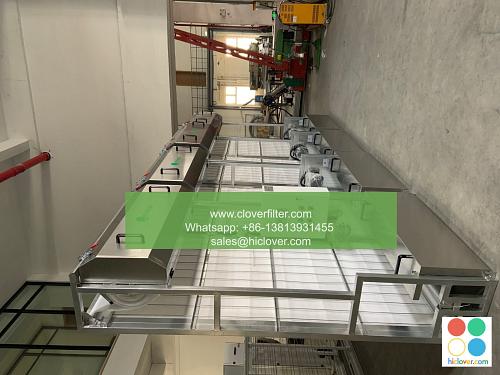The Importance of Air Filtration in Maryland’s NIH Research Facilities

Maryland’s National Institutes of Health (NIH) research facilities are at the forefront of medical and scientific innovation, driving discoveries that improve human health and quality of life. To support this critical work, maintaining a healthy and contamination-free environment is crucial. One essential aspect of achieving this is through the implementation of effective air filtration systems. In this article, we will explore the significance of air filtration in NIH research facilities, its various application areas, and the benefits it provides to researchers, staff, and the broader community.
##
Preventing Contamination and Ensuring Safety
Research facilities within the NIH conduct a wide range of studies, including those involving biohazardous materials, chemical compounds, and radioactive substances. The air quality in these environments must be meticulously controlled to prevent the spread of contaminants and ensure the safety of personnel. High-efficiency air filtration systems play a pivotal role in this process by capturing particulate matter, bacteria, viruses, and other airborne contaminants, thereby minimizing the risk of exposure and infection.
##
Promoting Productivity and Reliability
Effective air filtration is not only a safety measure but also a critical factor in maintaining the integrity and reliability of research. By removing airborne pollutants and moisture, these systems help to prevent equipment malfunction and sample contamination, which can lead to experimental failures and significant financial losses. Furthermore, a clean and healthy environment enhances worker productivity and morale, contributing to the overall success of research projects.
##
Application Areas
Air filtration systems are applied in various areas within NIH research facilities, including:
– Laboratories: Where biological, chemical, and physical experiments are conducted, requiring stringent control over air quality.
– Vivariums: Facilities housing animal models for research, where clean air is essential for the health and well-being of both the animals and the researchers.
– Clean Rooms: Environments that demand high levels of air purity to prevent contamination of sensitive equipment and experiments.
– Pharmaceutical and Biotechnology Research: Areas where drug development and biological product research are conducted, necessitating the highest standards of air quality control.
##
Technological Advancements and Future Directions
The field of air filtration is continually evolving, with technological advancements offering higher efficiencies, lower operational costs, and more sustainable solutions. HEPA filters, UV air purifiers, and smart ventilation systems are among the technologies being integrated into NIH research facilities to enhance air quality management. Future directions may include the development of more effective nanofiltration systems, bio-based air purification methods, and intelligent air quality monitoring systems that can predict and prevent contamination risks.
##
Conclusion
In conclusion, the importance of air filtration in Maryland’s NIH research facilities cannot be overstated. It is a critical component of maintaining a safe, productive, and reliable research environment. By highlighting various application areas and discussing the benefits of effective air filtration, it becomes clear that investing in high-quality air filtration systems is essential for the success of medical and scientific research. As research facilities continue to evolve and expand, the integration of advanced air filtration technologies will remain a key strategy in supporting groundbreaking research and discoveries.

